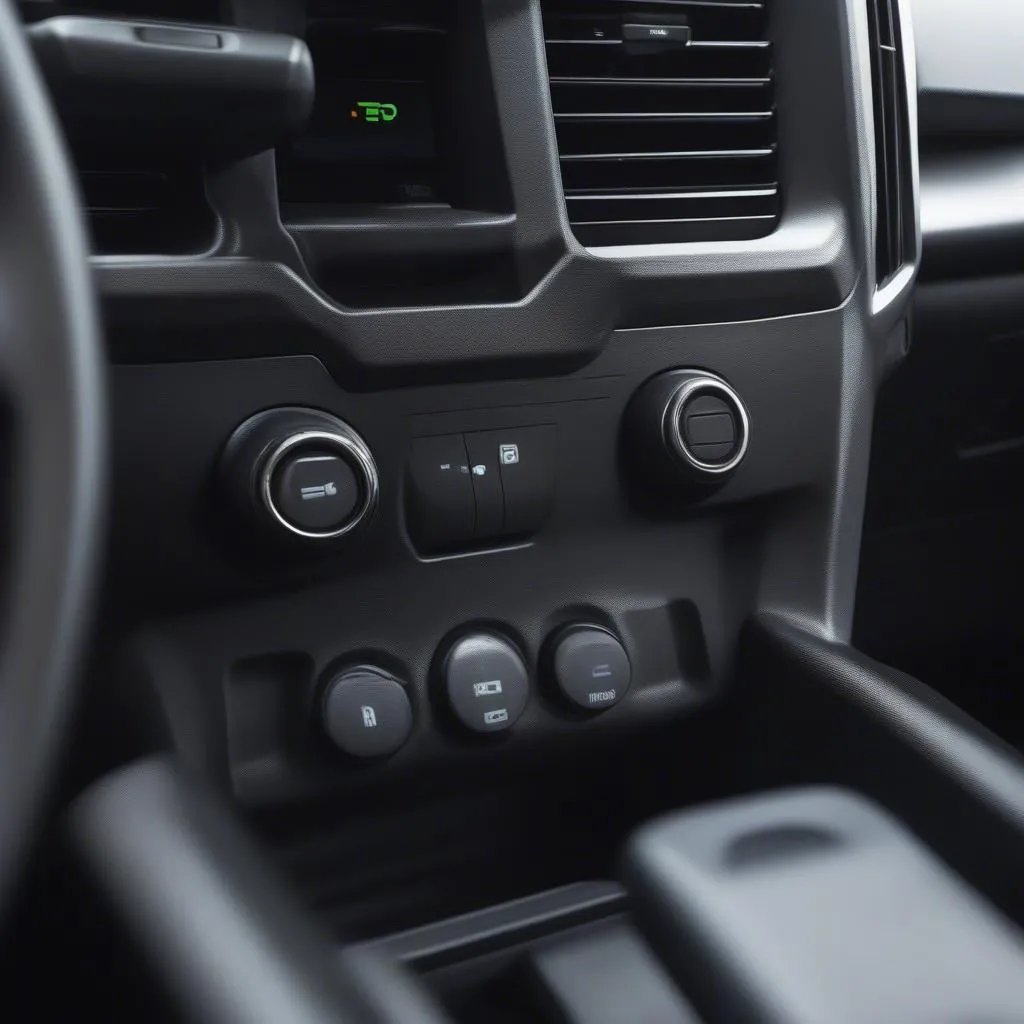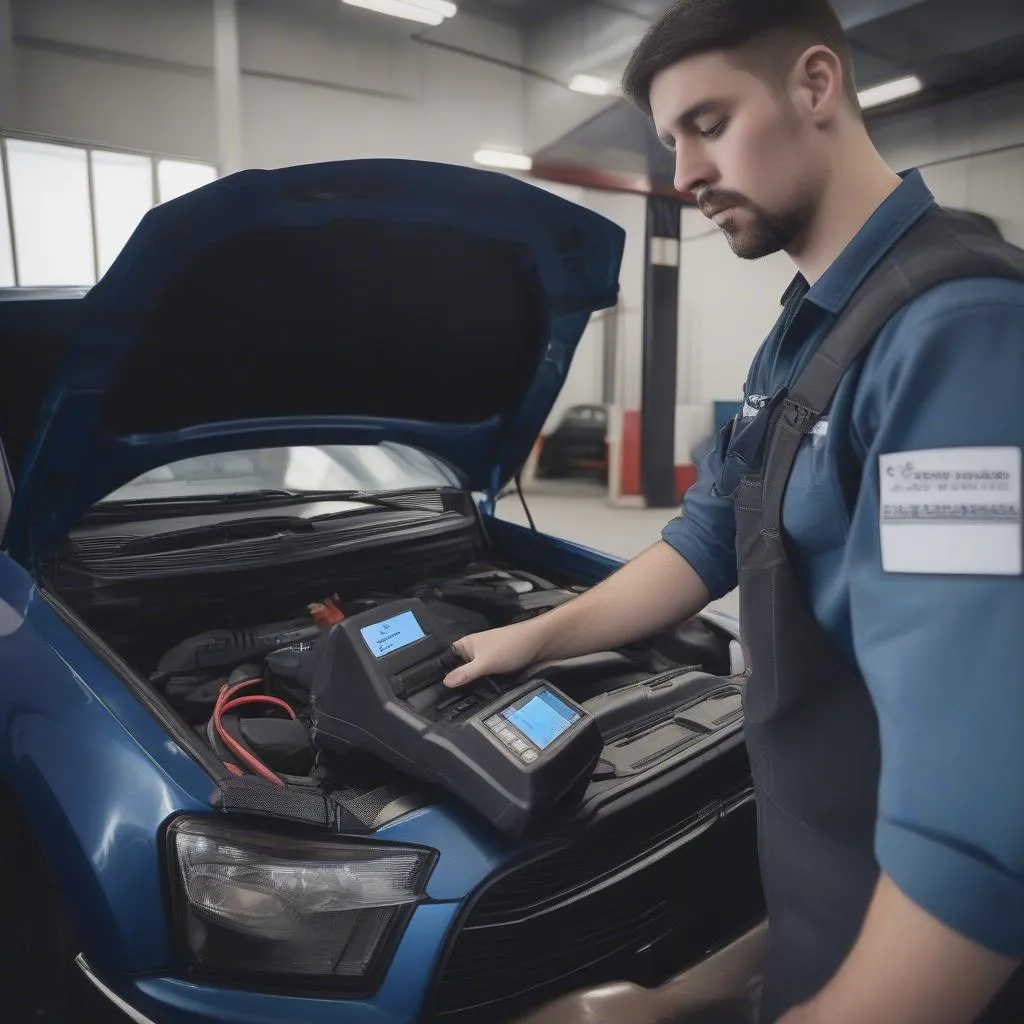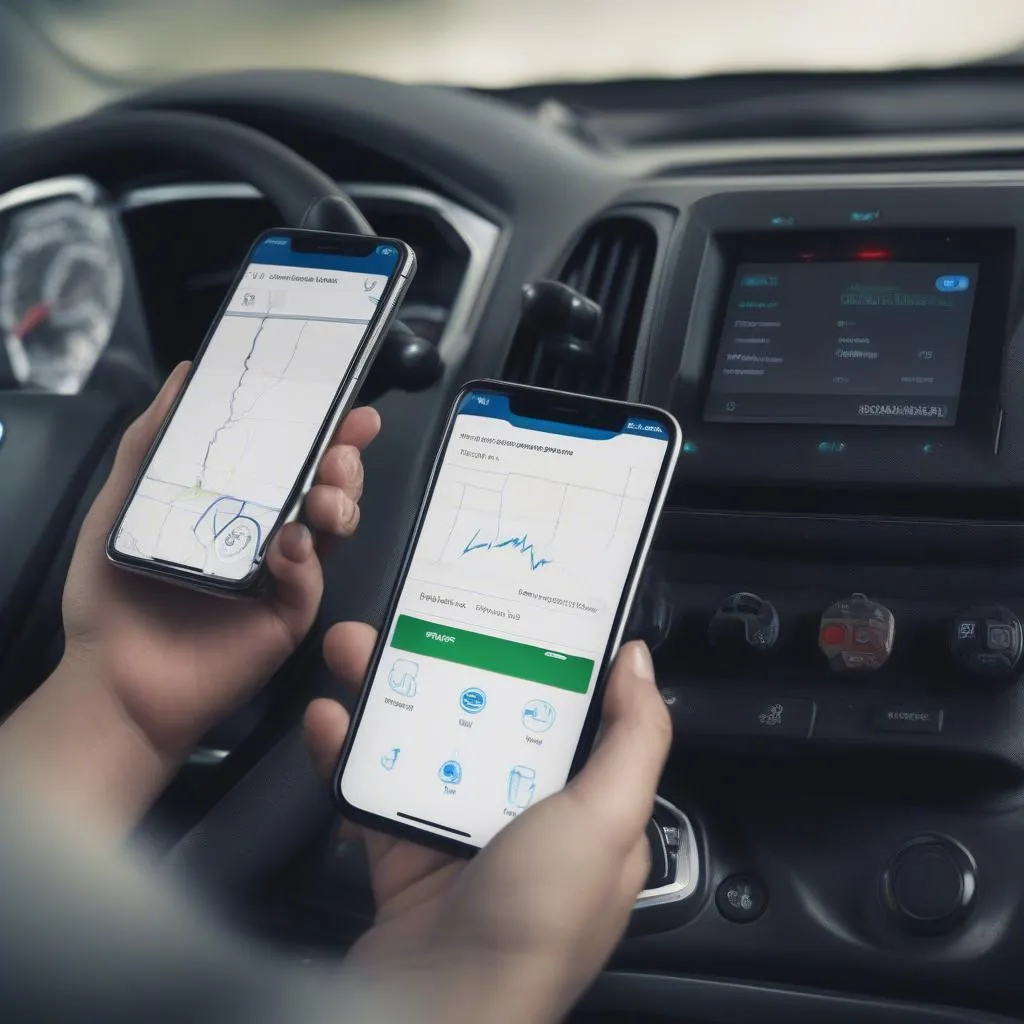Have you ever been driving your 2016 Ford and suddenly the check engine light comes on? Or maybe you’re trying to figure out what’s wrong with your car and need to access the OBD system? You’re not alone! Many Ford owners find themselves wondering, “How do I check my Ford 2016 OBD system?”. This article will delve into the world of OBD systems in Ford vehicles, specifically for the year 2016, and answer all your burning questions.
What is an OBD System?
An OBD (On-Board Diagnostics) system is a computer system built into modern cars that monitors various aspects of your vehicle’s performance and health. Think of it like a built-in doctor for your car. It constantly checks for any problems and records the results. The OBD system is crucial for helping mechanics diagnose and repair any issues.
Why Check Your Ford 2016 OBD System?
There are several reasons why checking your Ford 2016 OBD system is essential:
- Identify and troubleshoot problems: The OBD system can identify a wide range of issues, from minor problems like a faulty sensor to major problems like engine misfires.
- Prevent costly repairs: Early detection of problems can help prevent major issues from developing and potentially save you money in the long run.
- Keep your car running smoothly: By addressing issues promptly, you can ensure your car performs at its best and maintain its value.
How to Check Your Ford 2016 OBD System
Now, let’s get into the nitty-gritty. Checking your Ford 2016 OBD system can be done in two ways:
Using a Diagnostic Tool
-
Locate the OBD port: This is typically located under the dashboard, near the steering wheel. It looks like a standard rectangular connector.
-
Use a Diagnostic Tool: Connect a compatible diagnostic tool to the OBD port. There are many different types of diagnostic tools available, ranging from basic code readers to advanced scan tools that can provide detailed information about your vehicle’s systems.
-
Interpret the Results: The tool will display any trouble codes stored in the vehicle’s memory. These codes can be interpreted using a code lookup tool or a repair manual.
Using a Smartphone App
-
Download a compatible app: There are many OBD apps available for both Android and iOS devices. Some popular options include Torque, OBD Fusion, and DashCommand.
-
Connect a Bluetooth OBD Adapter: You’ll need a Bluetooth OBD adapter, which plugs into the OBD port and connects wirelessly to your smartphone.
-
Interpret the Data: Once connected, the app will display real-time data about your car’s performance, such as engine speed, fuel consumption, and even sensor readings.
What to Do with the Results
Once you have accessed the OBD system and reviewed the data, what comes next?
-
Interpret trouble codes: If you find any error codes, consult a repair manual or a code lookup tool to decipher their meaning. This will help you understand the potential problem and take appropriate action.
-
Research repairs: Depending on the issue, you might be able to address it yourself with some basic knowledge and tools. However, for complex problems, it’s always best to consult a qualified mechanic.
-
Keep records: It’s a good idea to keep a record of any trouble codes, repairs performed, and any other relevant information. This can be helpful if you need to address the issue again or sell your car in the future.
Common Questions about Ford 2016 OBD System Check
Where is the OBD port located on a 2016 Ford Focus?
The OBD port is typically located underneath the dashboard on the driver’s side, near the steering column.
Can I use any OBD scanner on my 2016 Ford Escape?
Most OBD scanners will work with a 2016 Ford Escape, but some may be more advanced and offer more features than others. It’s always a good idea to check the compatibility of the scanner before purchasing it.
Can I clear the check engine light myself?
While you can clear the check engine light using an OBD scanner, it’s important to understand that clearing the code does not necessarily fix the underlying issue. It’s best to address the cause of the problem to prevent it from recurring.
What are some common OBD codes on a 2016 Ford Mustang?
Some common OBD codes on a 2016 Ford Mustang include:
- P0300: Multiple Cylinder Misfire
- P0171: System Too Lean (Bank 1)
- P0420: Catalyst System Efficiency Below Threshold (Bank 1)
It’s important to note that these codes may indicate different issues depending on the specific model of the vehicle.
Need Help with Your Ford 2016 OBD System?
If you’re feeling overwhelmed by the OBD system or need help diagnosing any issues, don’t hesitate to reach out! We have a team of experienced automotive technicians who can assist you with all your Ford 2016 OBD needs.
 Ford 2016 OBD Port Location
Ford 2016 OBD Port Location
 Using a Diagnostic Scanner on a Ford
Using a Diagnostic Scanner on a Ford
 Ford 2016 OBD App
Ford 2016 OBD App
Contact us via Whatsapp: +84767531508. We’re here to help you keep your Ford running smoothly!
Related Articles
- How Long To Clear OBD
- Defender OBD Lock
- How To Access 2016 Hyundai Sonata Hybrid OBD-II Plug-In
- 308 CC OBD Location
- Ford Fusion 2016 OBD Port
We hope this article has been informative and helpful. Let us know in the comments below if you have any further questions!